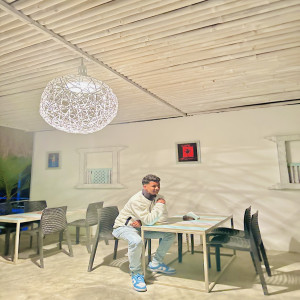Everest Base Camp Trek
The Everest Base Camp Trek is one of the most celebrated and sought-after trekking routes in the world, offering adventurers an unparalleled journey into the heart of the Himalayas. This trek not only provides a chance to witness the awe-inspiring grandeur of Mount Everest up close but also immerses trekkers in the vibrant culture of the Sherpa people, the famed mountain dwellers of Nepal.
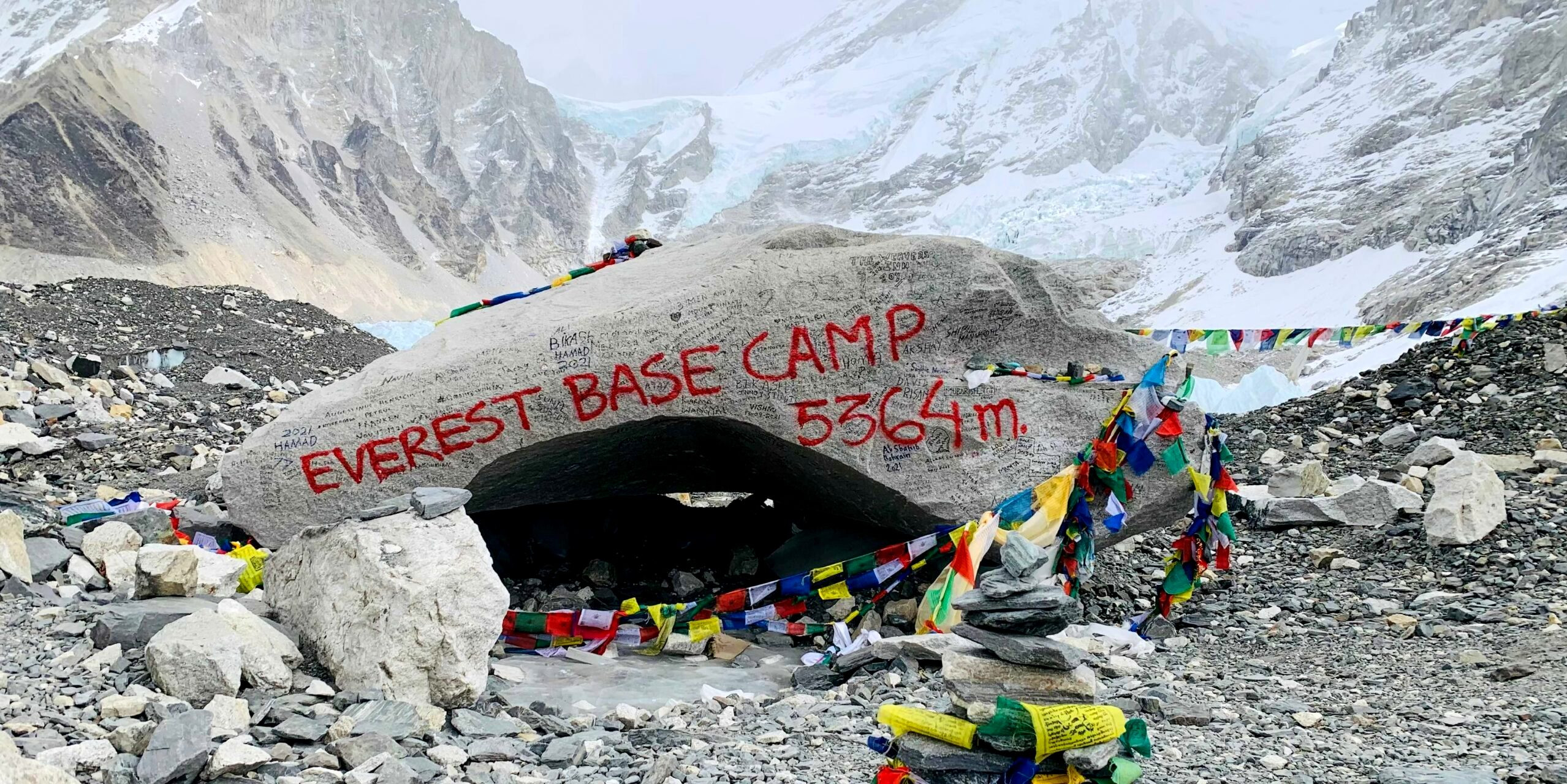
Overview: The trek typically starts with a flight from Kathmandu to Lukla, a small town serving as the Everest region's gateway. From Lukla, trekkers embark on a journey that takes them through lush valleys, dense forests, and Sherpa villages, all the while surrounded by some of the highest peaks on Earth.
Key Highlights
-
Namche Bazaar: Often referred to as the gateway to the high Himalayas, this bustling market town is a central hub for trekkers and climbers. It offers the first good views of Everest and is a great place to acclimatize.
-
Tengboche Monastery: Situated at 3,867 meters, this is one of the largest and most significant Buddhist monasteries in the Khumbu region, with panoramic views of the Himalayan peaks, including Everest, Lhotse, Nuptse, and Ama Dablam.
-
Kala Patthar: While the Everest Base Camp offers incredible views, the ascent to Kala Patthar is often considered the highlight of the trek. At 5,545 meters, it provides the best viewpoint to see Mount Everest, as the base camp itself does not offer a view of the summit.
Difficulty and Duration: The trek to Everest Base Camp is considered moderately difficult. It does not require technical climbing skills, but the high altitude and length of the trek, typically about 12 to 14 days, demand good physical fitness and proper acclimatization. The challenges are well-rewarded with breathtaking landscapes and a profound sense of achievement..
Preparation and Safety: Preparation should include physical training, securing appropriate gear, and understanding the risks associated with high-altitude trekking. Acclimatization days are built into the itinerary to help manage the risk of altitude sickness.
Cultural Experience: Trekking through the Khumbu Valley also offers an opportunity to delve into the rich Sherpa culture. Trekkers can experience local hospitality, cuisine, and traditions, which adds a profound cultural dimension to the high-altitude adventure.
The Everest Base Camp Trek is more than just a hike; it's an expedition into a world of extreme landscapes and enduring traditions. It challenges the body and inspires the spirit, making it a must-do for serious trekkers and adventurers worldwide. Whether you are drawn by the challenge of reaching the base of the highest peak on Earth or the allure of remote trails and cultural depth, this trek promises to be a memorable adventure.
Annapurna Circuit Trek
The Annapurna Circuit Trek is an iconic trekking route that takes adventurers around the majestic Annapurna massif in Nepal. Known for its breathtaking landscapes and cultural diversity, this trek offers a comprehensive Himalayan experience, combining stunning natural beauty with a deep cultural immersion. It's widely celebrated as one of the best long-distance treks in the world.
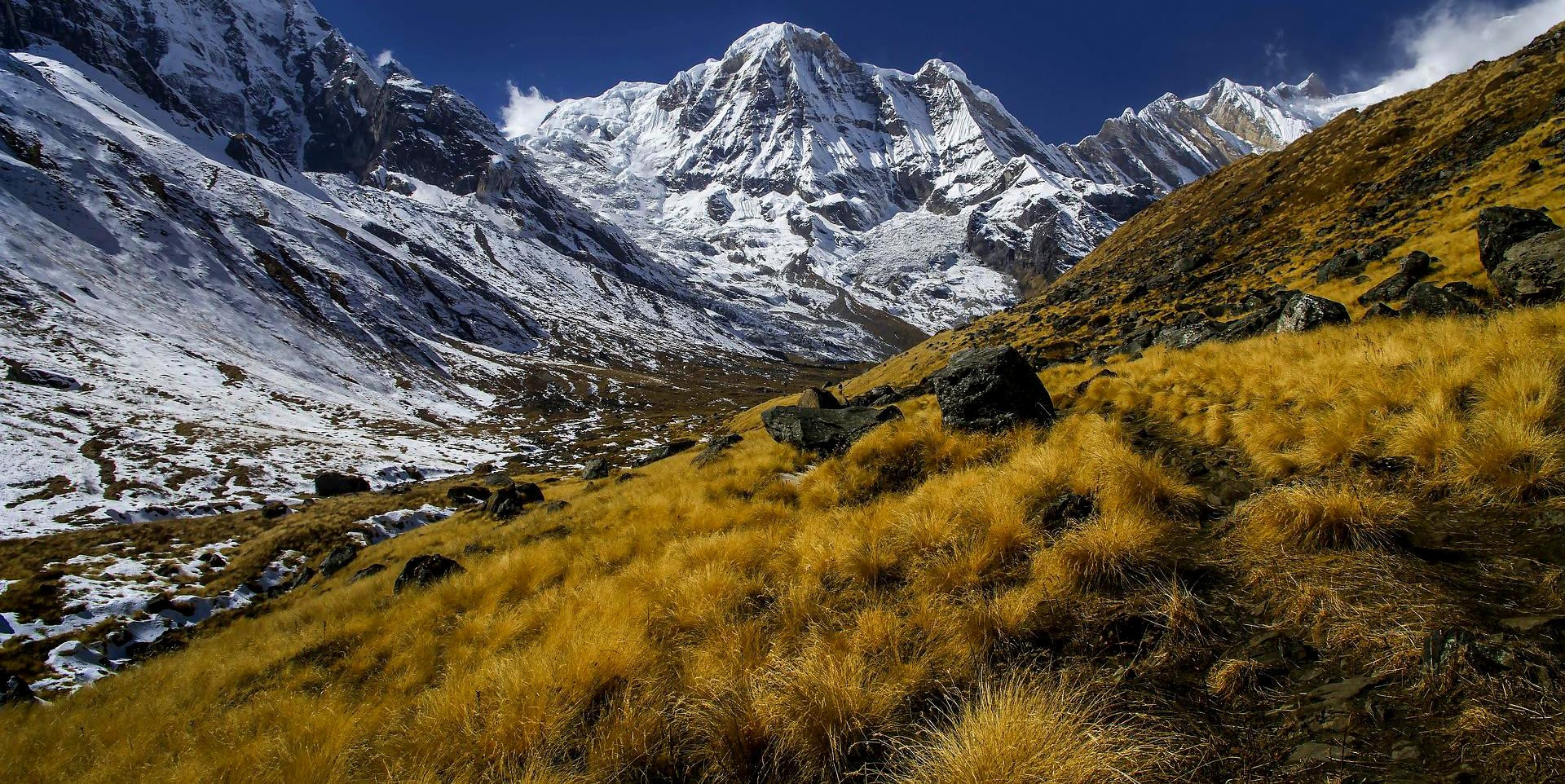
Overview: The Annapurna Circuit typically begins in Besisahar or Bhulbhule in the Marsyangdi Valley and ends in the Kali Gandaki Gorge, the world’s deepest river gorge. The route varies in altitude from 760 meters at Besisahar to 5,416 meters at Thorong La pass, the highest and most challenging point of the trek.
Key Highlights
-
Thorong La Pass: Crossing this high mountain pass at 5,416 meters is the climax of the trek. It offers spectacular views of the Annapurna range and a significant sense of achievement.
-
Manang and Mustang Valleys: These regions offer unique landscapes influenced by their proximity to the Tibetan plateau, presenting trekkers with views of stark, arid highlands.
-
Muktinath Temple: This sacred site for both Hindus and Buddhists is a key cultural highlight, providing insight into the spiritual harmony that characterizes Nepal.
-
Hot Springs at Tatopani: After days of trekking, the natural hot springs provide a therapeutic experience and a relaxing break.
Difficulty and Duration: The Annapurna Circuit is considered a moderate to challenging trek, largely due to its length and the high altitude. The trek traditionally takes about 15 to 20 days, although road construction has opened up options for shorter variations.
Preparation and Safety: Preparation for the Annapurna Circuit should include physical training aimed at building stamina and endurance. It’s also crucial to have proper gear, particularly for cold weather, as temperatures can drop significantly, especially near Thorong La Pass. Acclimatization days are essential to adjust to high altitudes and reduce the risk of altitude sickness.
Cultural Experience: The trek passes through diverse ethnic communities, including Brahmin, Chhetri, Tibetan, and Gurung, offering trekkers a rich tapestry of Nepalese culture. Local teahouses and guesthouses provide hospitable accommodation and opportunities to taste local cuisine and observe daily life in the Himalayas.
The Annapurna Circuit Trek is a compelling journey that not only tests one's physical and mental endurance but also enriches the soul. With its combination of challenging hikes, mesmerizing views, and cultural encounters, it stands as a bucket-list adventure for trekkers around the globe. This trek is a profoundly rewarding experience that offers each traveler a personal glimpse into the heart of Nepal’s natural beauty and its people’s enduring spirit.
Langtang Valley Trek
The Langtang Valley Trek is a serene and stunning excursion into the heart of the Himalayas, located just north of Kathmandu. Known for its relatively easy access and breathtaking mountain landscapes, this trek provides a quieter alternative to the more frequented trails to Everest or Annapurna. It offers a splendid combination of natural beauty and cultural richness within the Langtang National Park, home to diverse wildlife and lush vegetation.
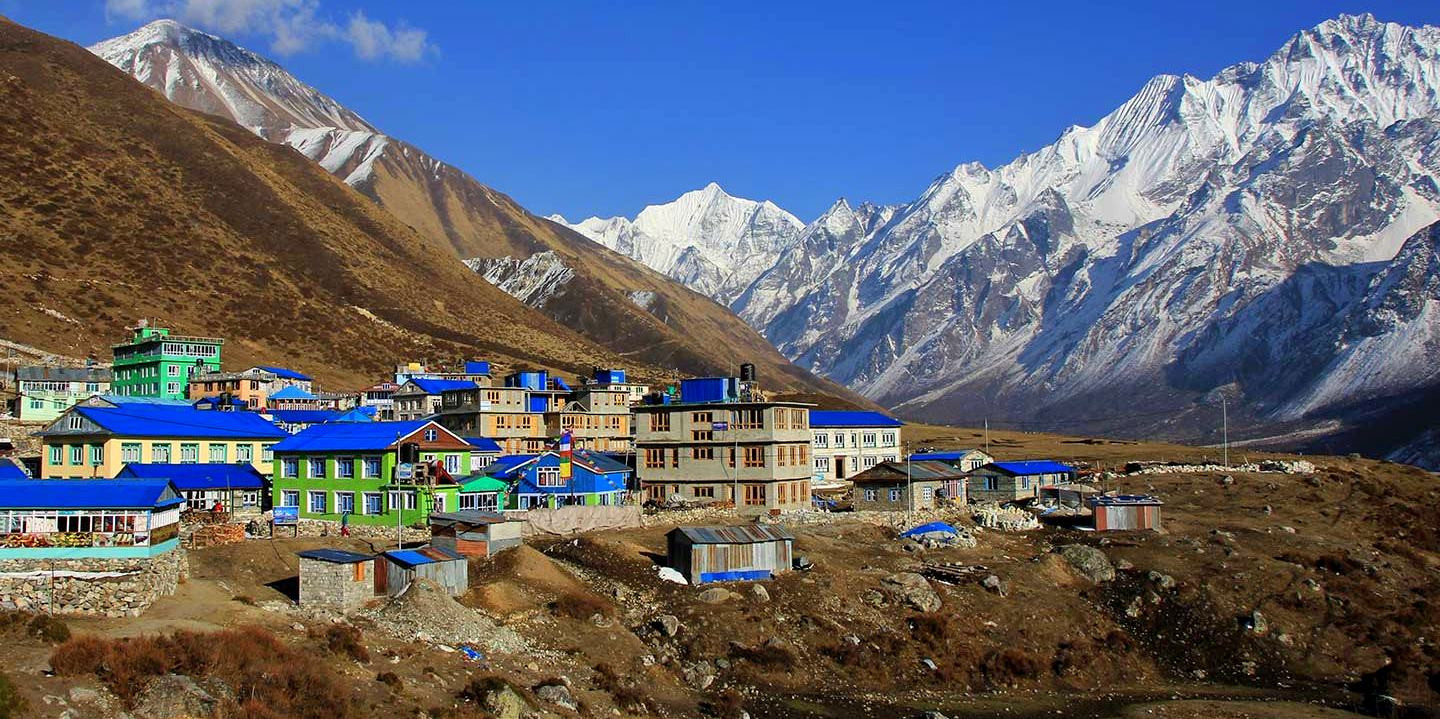
Overview: The trek usually starts from Syabrubesi, a small town a few hours’ drive from Kathmandu. From there, trekkers make their way up the beautiful Langtang Valley, nestled between the main Himalayan range to the north and a slightly lower range of snowy peaks to the south. The trek culminates at Kyanjin Gompa, a charming village where ancient Buddhist practices are still a vital part of daily life.
Key Highlights
-
Kyanjin Gompa: This small Tibetan Buddhist monastery is a peaceful retreat and serves as the turnaround point for most treks in the valley.
-
Tserko Ri: For those willing to extend their trek by a day or two, the climb to Tserko Ri at 5,000 meters offers magnificent panoramic views of the Langtang range.
-
Langtang Village: Although devastated by the 2015 earthquake, the rebuilt Langtang Village stands as a testament to the resilience of the local community and offers insight into Tamang culture.
Difficulty and Duration: The Langtang Valley Trek is considered moderate in difficulty. It does not reach the extreme altitudes of some other Himalayan treks, topping out at around 3,870 meters at Kyanjin Gompa, and typically takes about 7 to 9 days to complete.
Preparation and Safety: The trek does not require technical climbing skills, but adequate preparation in terms of physical fitness will enhance the experience. Essential gear includes good hiking boots, warm clothing, and a reliable sleeping bag, as nights can be cold. Altitude sickness can still be a risk, although it is less common on this trek compared to higher routes.
Cultural Experience: The trek offers a wonderful opportunity to engage with the local Tamang and Sherpa communities, whose hospitality in the teahouses along the trail is heartwarming. Their unique customs, traditional attire, and Buddhist practices add a rich cultural layer to the trekking experience.
The Langtang Valley Trek is an excellent choice for those looking for a shorter trek in Nepal without sacrificing the views of dramatic peaks and the chance to experience Himalayan culture. It combines natural beauty, simple trekking conditions, and cultural exposure to offer a memorable adventure for those looking to explore the quieter side of Nepal’s trekking offerings. Whether you are a first-time trekker or a seasoned hiker looking for a less trodden path, the Langtang Valley offers a rewarding journey into the world of the Himalayas.
Manaslu Circuit Trek
The Manaslu Circuit Trek is a remarkable journey around the world's eighth-highest mountain, offering an off-the-beaten-path experience compared to the more trafficked trails of Everest and Annapurna. This trek is celebrated for its breathtaking landscapes, challenging terrain, and the opportunity to witness authentic, untouched Nepalese culture.
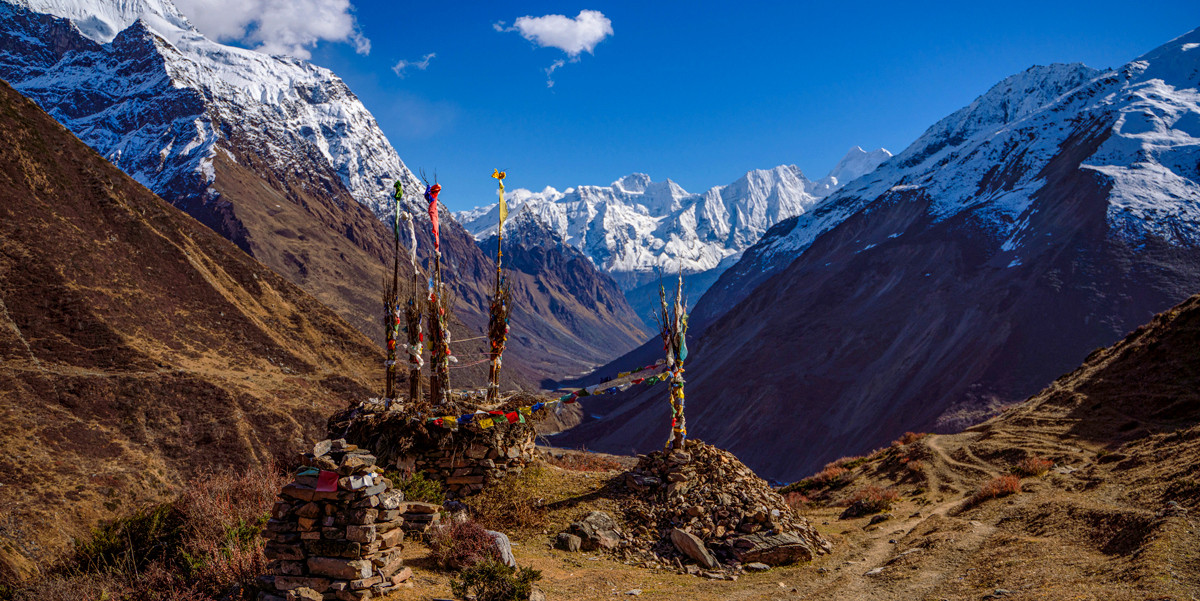
Overview: The trek circumnavigates the majestic Manaslu (8,163 meters) in Nepal's Gorkha district. Starting typically from Soti Khola, the route follows ancient salt-trading paths along the Budhi Gandaki River, climbing towards the Larkya La Pass and descending into the Marsyangdi valley. The trek ends in Besisahar, which is also the starting point for the Annapurna Circuit.
Key Highlights
-
Larkya La Pass: At 5,106 meters, crossing this high pass is both a challenge and a highlight, offering stunning views of the Manaslu range, including Himlung Himal, Cheo Himal, and Kang Guru.
-
Samagaon and Samdo Villages: These remote villages provide a glimpse into the daily lives of the local Buddhist communities and are excellent places for acclimatization and cultural immersion.
-
Tsum Valley: An optional side trip from the main Manaslu Circuit, the Tsum Valley is known for its pristine landscapes and Tibetan Buddhist culture, isolated from the modern world.
Difficulty and Duration: The Manaslu Circuit Trek is considered challenging due to its steep, rugged trails and the high altitude of Larkya La Pass. Typically, it takes about 14 to 20 days to complete, depending on the chosen itinerary and pace.
Preparation and Safety: Trekking the Manaslu Circuit requires good physical fitness and some trekking experience, especially at high altitudes. Preparation should include cardiovascular and strength training. A Manaslu Circuit permit requirement includes obtaining a Restricted Area Permit, which must be arranged through a registered trekking agency, as independent trekking is not allowed.
Cultural Experience: The trek passes through areas inhabited by various ethnic groups, including Nubri and Tsum, where centuries-old Buddhist traditions are still a vital part of everyday life. The trail offers a chance to visit ancient monasteries, mani walls, and chortens, adding a profound spiritual dimension to the trek.
The Manaslu Circuit Trek is an extraordinary adventure for those looking to explore deep into the heart of the Himalayas. Its remote paths, challenging climbs, and cultural depth provide an intensely rewarding experience. It remains a less crowded alternative to Nepal's more famous treks, offering solitude and a sense of undiscovered wonder throughout the journey. Whether you're drawn by the allure of high-altitude trekking or the enchantment of ancient cultures, the Manaslu Circuit delivers an unforgettable experience with every step.
Ghorepani Poon Hill Trek
The Ghorepani Poon Hill Trek is one of the most accessible and immensely rewarding treks in the Annapurna region of Nepal, famed for its spectacular mountain vistas and its striking sunrise and sunset views from Poon Hill. This trek is perfect for those who want to experience the beauty of the Nepalese Himalayas without committing to the strenuous and lengthy journeys that characterize many other Himalayan treks.
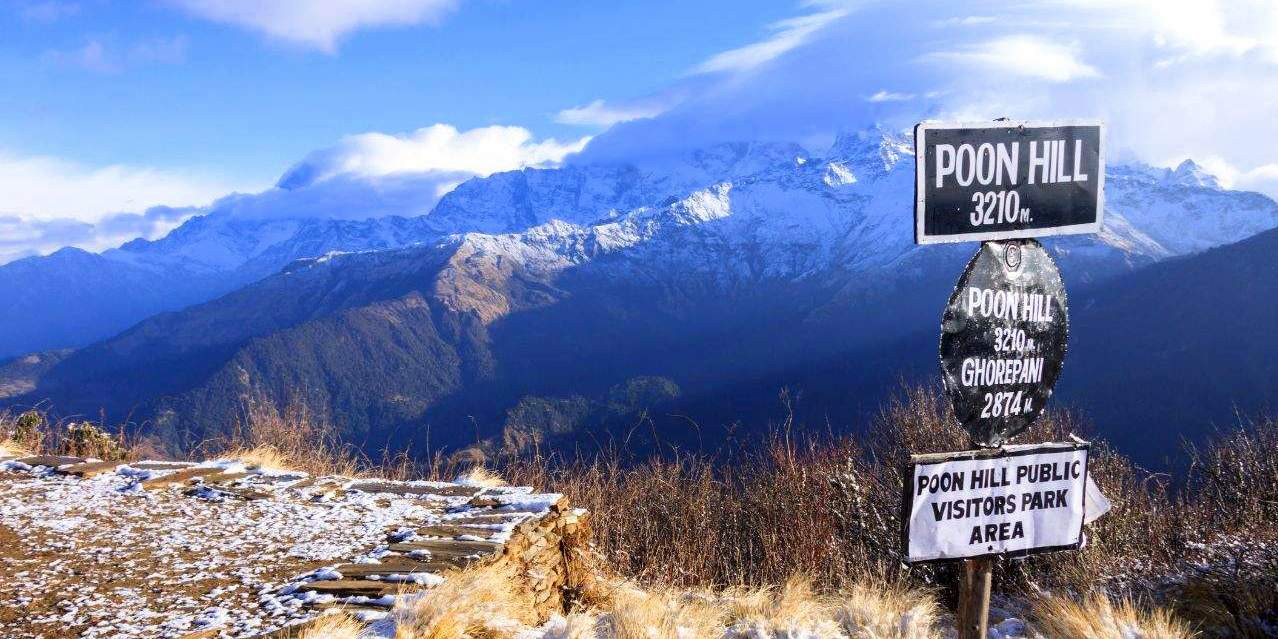
Overview: Typically starting from Nayapul, a short drive from Pokhara, the trek follows a loop through Ulleri, Ghorepani, and Ghandruk, offering a manageable adventure that can be completed in about 4-5 days. The route is well-trodden and comfortably equipped with well-established tea houses, making it ideal for first-time trekkers or those traveling with families.
Key Highlights
-
Poon Hill: At an elevation of 3,210 meters, Poon Hill is the trek's prime destination. Climbing to this viewpoint to watch the sunrise over the Annapurna and Dhaulagiri ranges is a highlight for many trekkers.
-
Rhododendron Forests: Particularly in the spring, trekkers will find themselves wandering through enchanting forests of blooming rhododendrons, which add a vivid splash of color to the landscape.
-
Gurung and Magar Villages: The trek passes through several charming villages where you can experience the warm hospitality and rich culture of the Gurung and Magar communities.
Difficulty and Duration: The Ghorepani Poon Hill Trek is considered easy to moderate in difficulty. It does not involve high altitudes or difficult terrain, making it accessible to most people with a basic level of fitness. The short duration also adds to its appeal as a quick Himalayan escape.
Preparation and Safety: This trek requires minimal preparation compared to higher-altitude treks. However, it is still important to have suitable trekking gear, especially reliable hiking boots and layers for changing temperatures. While the risk of altitude sickness is low, staying hydrated and keeping a comfortable pace are important for a safe trek.
Cultural Experience: Staying in teahouses and interacting with the local communities along the way provides a wonderful insight into the daily lives and cultural practices of the Nepalese hill tribes. The trek also offers opportunities to taste local cuisine and perhaps participate in local dances and music.
The Ghorepani Poon Hill Trek offers a fantastic introduction to Himalayan trekking, with its stunning panoramas, rich cultural experiences, and manageable challenges. It's a perfect trek for those looking to experience the grandeur of the mountains without the physical demands of higher-altitude treks. With its memorable Ghorepani Poon Hill sunrise view and the natural beauty of the Annapurna region, this trek remains a favorite for both seasoned trekkers and those new to the trails.
Upper Mustang Trek
The Upper Mustang Trek takes you to one of the most remote and culturally distinct regions of Nepal, often described as the last bastion of traditional Tibetan culture. This trek is a journey back in time, exploring the arid, starkly beautiful landscape of the Mustang region, which was a restricted demilitarized area until 1992 and still retains much of its ancient allure.
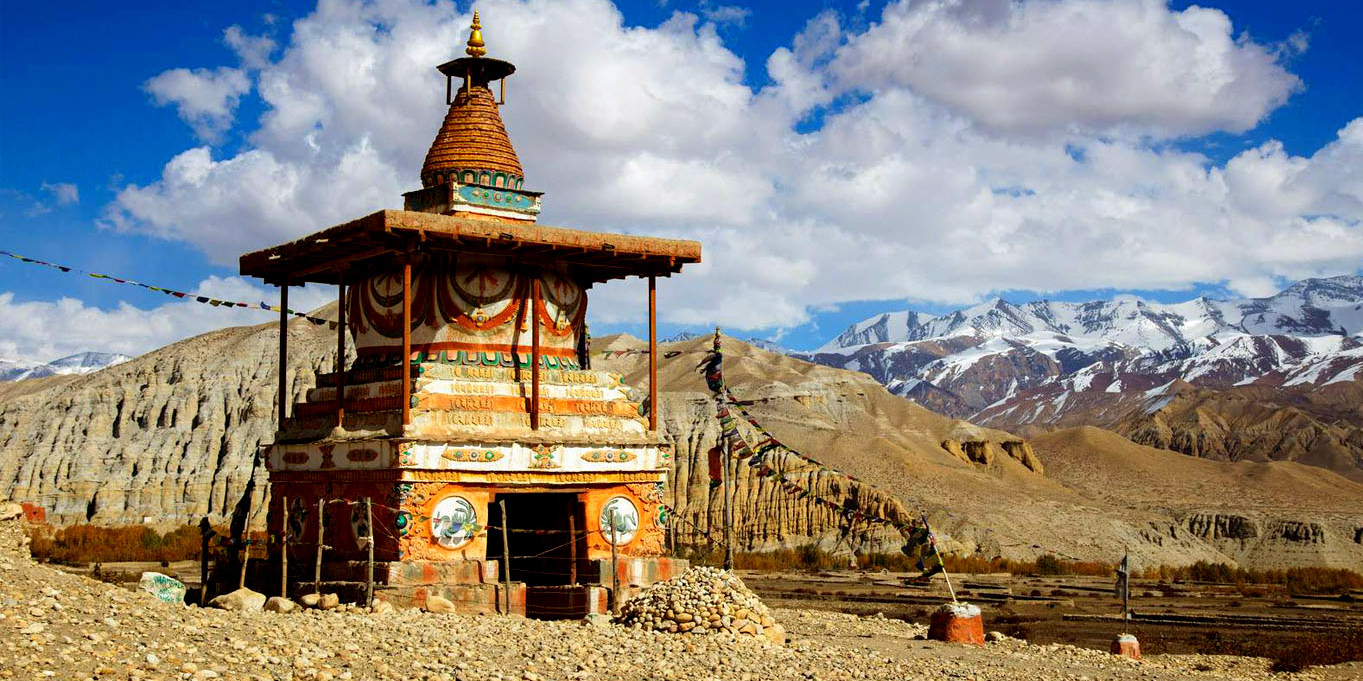
Overview: The trek typically begins in Jomsom after a flight or a long drive from Pokhara and then follows the ancient salt caravan route through arid landscapes to the medieval town of Lo Manthang, the capital of the former Kingdom of Mustang. The trail traverses barren, high-altitude deserts with panoramic views of Nilgiri, Annapurna, Dhaulagiri, and several other peaks.
Key Highlights
-
Lo Manthang: The walled capital city of the former kingdom, with its alleyways, monasteries, and royal palace, offers a fascinating glimpse into a way of life that has remained largely unchanged for centuries.
-
Ancient Monasteries: The region is dotted with some of the oldest Tibetan Buddhist monasteries in the world, including the 15th-century Thubchen Gompa and the 13th-century Jampa Gompa.
-
Unique Landscape: The landscape of Upper Mustang, with its deep ravines and rock shelves set against dramatic backdrops of snow-capped mountains, offers a stark beauty that is unlike anywhere else in Nepal.
Difficulty and Duration: The Upper Mustang Trek is considered moderate in difficulty. Although the trail does not go extremely high, it reaches altitudes of around 3,800 meters (12,467 feet) at Lo Manthang. The trek typically takes about 10 to 14 days, depending on the itinerary and pace.
Preparation and Safety: Preparation for the Upper Mustang Trek involves standard trekking gear, including sturdy boots and layers for variable temperatures. Due to the remote nature of the area, trekkers should be reasonably fit and prepared for basic conditions in guesthouses. Also, a special permit is required to enter Upper Mustang, known as the Upper Mustang restricted area permit, reflecting its status as a protected region.
Cultural Experience: The trek offers an extraordinary cultural experience, with opportunities to delve into the traditions and lifestyles of the local Loba people, who practice a form of Tibetan Buddhism and maintain many ancient customs and festivals, which are vividly displayed in their colorful attire and traditional houses.
The Upper Mustang Trek is an unforgettable adventure for those looking to explore a unique cultural landscape that is markedly different from any other part of Nepal. Its isolation and restricted access have helped preserve its mystique and cultural integrity, making it a fascinating journey not just into the heart of the Himalayas but also into the history of a thriving ancient Tibetan culture.
Gokyo Lakes Trek
The Gokyo Lakes Trek is a spectacular alternative to the classic Everest Base Camp trek, offering stunning views, fewer crowds, and the unique beauty of the Gokyo Valley with its series of emerald lakes. This trek is particularly famous for its breathtaking panoramas of the Himalayan giants and for providing a more serene and contemplative experience in the Everest region.
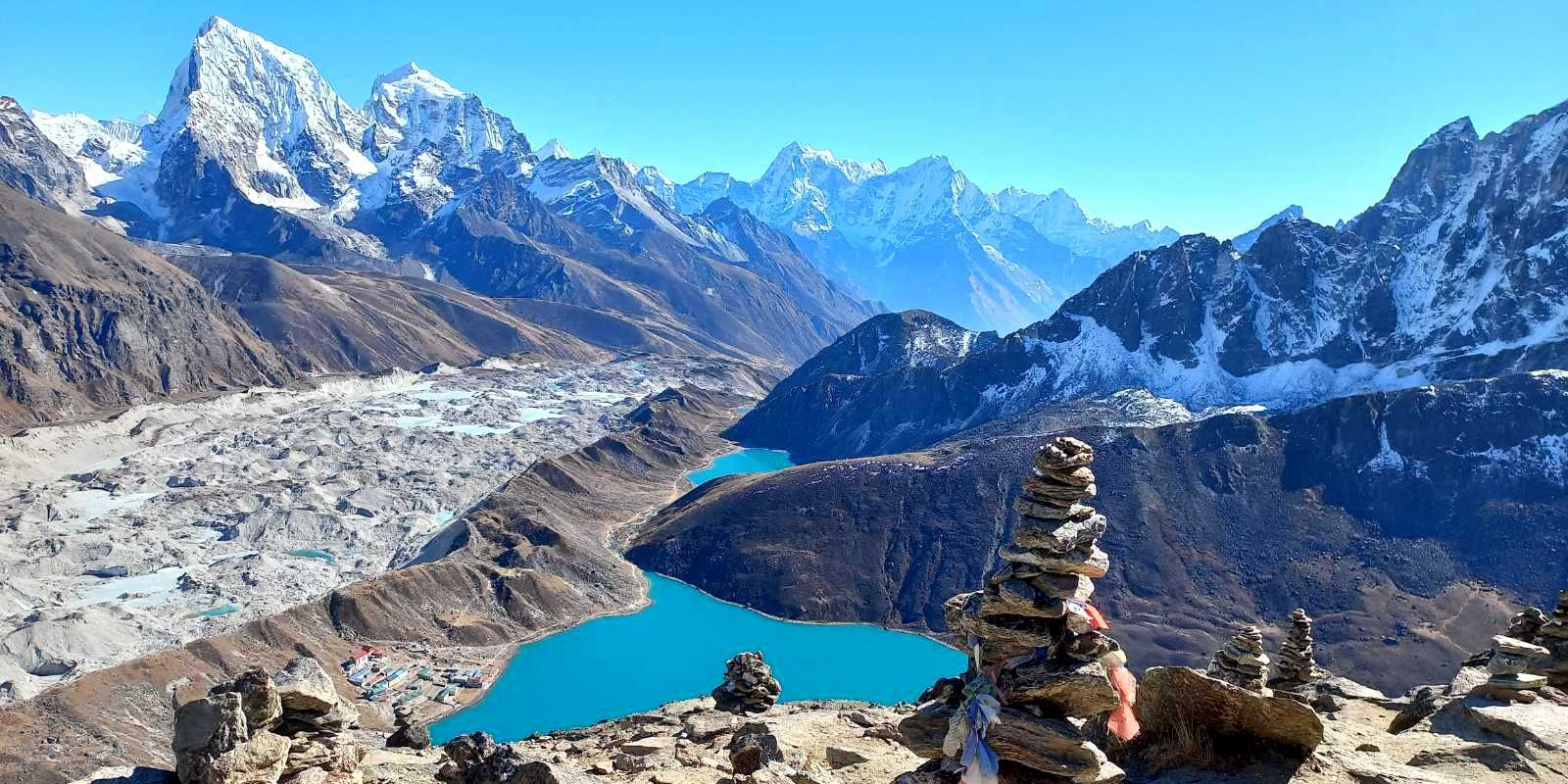
Overview: The trek begins with a flight from Kathmandu to Lukla, similar to the Everest Base Camp route. From Lukla, trekkers diverge from the well-trodden path to Everest, turning towards the pristine and tranquil Gokyo Valley. The main highlights of the trek include the ascent of Gokyo Ri and the exploration of the glacial Gokyo Lakes, the world’s highest freshwater lake system.
Key Highlights
-
Gokyo Ri: Climbing Gokyo Ri (5,357m) is a highlight, offering some of the best panoramic views in the region, including of Mount Everest, Lhotse, Makalu, and Cho Oyu.
-
Gokyo Lakes: The trek involves visits to the six main Gokyo Lakes, which are sacred to both Hindus and Buddhists. The lakes are renowned for their vibrant turquoise colors and the dramatic peaks that tower over them.
-
Ngozumpa Glacier: Trekkers will skirt the edges of the Ngozumpa Glacier, the longest glacier in the Himalayas, presenting unique landscape features and a stark reminder of the dynamic natural forces at work in the region.
Difficulty and Duration: The Gokyo Lakes Trek is considered moderate to challenging, primarily due to the altitude, with the highest point at Gokyo Ri. The entire journey typically takes about 12 to 15 days, allowing for proper acclimatization and exploration of the lakes and surrounding peaks.
Preparation and Safety: Preparation for the Gokyo Lakes Trek should include physical conditioning, particularly for high-altitude hiking. It's essential to be equipped with appropriate gear for cold weather, as temperatures can drop significantly, especially in the evenings and early mornings. Acclimatization days are crucial to adapt to the high altitude and reduce the risk of altitude sickness.
Cultural Experience: While the trek is more focused on natural beauty than cultural immersion, trekkers still pass through Sherpa villages and can experience the warm hospitality of the local communities in teahouses and lodges along the route. The interaction with the Sherpa people and their rich cultural heritage adds a significant dimension to the trek.
The Gokyo Lakes Trek is a fulfilling alternative for those who wish to experience the magnificence of the Everest region in a less frequented setting. The serene beauty of the Gokyo Lakes combined with the challenge of high-altitude trekking makes this route a compelling choice for those seeking both adventure and tranquility in the Himalayas. With its dramatic scenery and the reflective waters of the high-altitude lakes, the Gokyo Lakes Trek is an unforgettable journey that showcases the quieter side of Everest's overwhelming majesty.
Tips for Popular Trekking Destinations in Nepal
Trekking in Nepal offers an unparalleled opportunity to experience some of the world’s most breathtaking landscapes and vibrant cultures. Whether you’re planning to explore the Everest Base Camp, the Annapurna Circuit, or any of the other popular trekking destinations in Nepal, here are some essential tips to ensure a successful and enjoyable adventure:
-
Acclimatize Properly: Altitude sickness is a real concern. Make sure your itinerary includes sufficient days for acclimatization, especially when trekking above 3,000 meters. Listen to your body, and do not ascend too quickly.
-
Hire a Guide or Porter: While some trails can be trekked independently, hiring a guide or porter can enhance your experience. Guides offer valuable insights into the local culture and environment, and porters can help carry your load, making your trek more enjoyable.
-
Pack Smart: Essentials include a good quality backpack, a sleeping bag suitable for cold climates, layers of thermal clothing, a waterproof jacket, sturdy trekking boots, a first-aid kit, a water purifier, and sun protection (hat, sunglasses, sunscreen).
-
Get Insured: Make sure you have travel insurance that covers high-altitude trekking and medical evacuation, which is crucial for remote and high-altitude areas where medical facilities are limited.
-
Respect Local Traditions: Nepal is rich in cultural diversity. Always show respect for local customs, dress modestly, ask permission before taking photographs, and be mindful of sacred sites and traditions.
-
Stay Hydrated and Eat Well: Dehydration can hasten the onset of altitude sickness. Drink plenty of water and eat meals rich in carbohydrates. Avoid alcohol as it can increase the risk of dehydration and affect your ability to acclimatize.
-
Carry Cash: Many trekking routes do not have ATM facilities, and not all places accept credit cards. Ensure you carry enough Nepalese currency to cover your expenses throughout the trek.
-
Protect the Environment: Nepal’s ecosystems are delicate. Always stick to marked trails, dispose of waste properly, use water sparingly, and avoid disturbing wildlife.
-
Stay Informed and Flexible: Weather in the mountains can be unpredictable. Stay informed about weather conditions, and be prepared to adjust your plans if necessary. Flexibility can be key to a safe and enjoyable trek.
Following these tips can greatly enhance your trekking experience in Nepal, ensuring you not only enjoy the stunning natural beauty but also engage respectfully and responsibly with the local environments and communities.
Ideal Time for Popular Trekking Destinations in Nepal
Choosing the ideal time to trek in Nepal is crucial for ensuring the best experience, whether you're venturing into the high altitudes of the Everest region or exploring the cultural landscapes of the Annapurna Circuit. Here's a guide to the best times to visit popular trekking destinations in Nepal:
-
Spring (March to May): This season is characterized by warmer weather and stable conditions, making it ideal for trekking. The skies are generally clear, providing excellent views of the mountains. The trails come alive with blooming wildflowers, including rhododendrons, adding vibrant colors to the landscape.
-
Monsoon (June to August): During the monsoon season, trekking can be challenging due to heavy rainfall, slippery trails, and the increased risk of landslides, especially in the more lush and forested regions. However, some areas like Upper Mustang and Dolpo are in the rain shadow of the Himalayas and are less affected by rain, offering viable trekking options.
-
Autumn (September to November): Considered the best overall season for trekking in Nepal, autumn features clear, stable weather and mild temperatures. The monsoon rains leave the air clean and the landscapes freshly washed, which enhances visibility and makes this season a favorite among trekkers.
-
Winter (December to February): Winter brings cold weather, especially at higher altitudes, where temperatures can drop significantly below freezing. While daytime treks can still be enjoyable, nights are very cold. This season is less suitable for high-altitude treks but can be good for lower elevation treks where the conditions are milder and trails are less crowded.
Each season offers distinct experiences, and the choice of when to trek can depend on personal preferences for weather conditions, scenery, and the level of challenge desired.
From the great cultural routes of Annapurna to the barren scenery of Upper Mustang, Nepal's trekking destinations offer unmatched experiences, including the high-altitude views of Everest. Every journey presents a one-of-a-kind mix of cultural submersion, natural beauty, and adventure. A good experience depends on appropriate preparation, choosing the right season, and honoring local traditions and the environment. Whether you prefer to be alone or with people, Nepal's trails assure unforgettable experiences and long-lasting recollections.
FAQs for Popular Trekking Destinations in Nepal
Q: What is the best time to trek in Nepal?
A: The best times to trek in Nepal are during the spring (March to May) and autumn (September to November). These periods offer stable weather, clear skies, and the best mountain visibility.
Q: Do I need a guide to trek in Nepal?
A: While some regions can be trekked independently, hiring a guide is highly recommended for remote or challenging treks like Everest Base Camp or Annapurna Circuit. Guides enhance safety, provide valuable insights, and assist with navigation.
Q: How do I prevent altitude sickness?
A: Prevent altitude sickness by ascending slowly to allow acclimatization, staying hydrated, avoiding alcohol, and considering altitude sickness medication. Incorporate acclimatization days into your itinerary.
Q: What should I pack for a trek in Nepal?
A: Essential items include sturdy trekking boots, layers for varying temperatures, a waterproof jacket, a sleeping bag for cold climates, sun protection, a water purifier, and high-energy snacks.
Q: Are trekking permits required in Nepal?
A: Yes, trekking permits are required for most areas. This includes a TIMS card for general treks and special permits for restricted areas like Upper Mustang or Manaslu.
Q: Can I trek in Nepal during the monsoon or winter?
A: Trekking in rain-shadow areas like Upper Mustang and Dolpo is possible during the monsoon. Winter trekking is feasible at lower altitudes, but higher regions can be cold and snowbound.
Q: What are the accommodations like on treks in Nepal?
A: Accommodations vary from basic teahouses with communal bathrooms to more comfortable lodges with private facilities, depending on the route.
Q: How much does it cost to trek in Nepal?
A: Costs vary widely depending on the trek, duration, guide services, accommodations, and personal spending habits, ranging from $20 to $60 per day.
Q: How fit do I need to be to trek in Nepal?
A: Fitness requirements vary by trek. Shorter, lower-altitude treks are suitable for moderate fitness levels, while longer, high-altitude treks require good physical fitness and stamina.
Q: What is the etiquette for interacting with locals?
A: Respect local customs, dress modestly, ask permission before taking photos, learn basic Nepali phrases, negotiate prices politely, and respect religious sites and practices.
For the Nepal tour, please click here.
If you are looking for different kinds of Nepal Tours or Trekking Packages, feel free to contact us.








